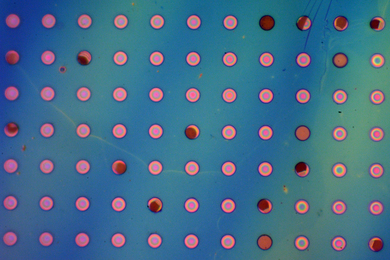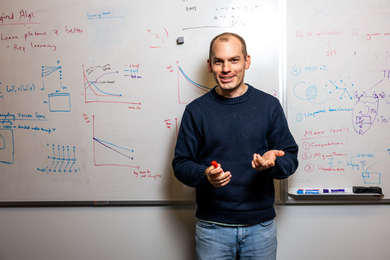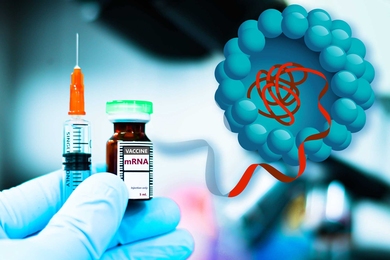A pair of major grants from the U.S. Department of Defense will support MIT research on building ultra-fast microchips for computation and communications, as well as research on new electronic surveillance systems.
The grants, given out under a program called the Multidisciplinary University Research Initiative, were among 41 awarded nationwide with a total value of $260 million.
Five MIT researchers, led by Principal Investigator Michael Strano, the Charles and Hilda Roddey Associate Professor of Chemical Engineering, along with colleagues at Harvard and Boston University, received a $5 million, five-year grant from the Office of Naval Research (ONR) for work on building a new generation of ultra-fast (terahertz) microchips from graphene, a form of carbon. Co-directors of the project are Assistant Professor of Physics Pablo Jarillo-Herrero, on the physics side, and Assistant Professor of Electrical Engineering Tomas Palacios on the engineering side. The project also includes Assistant Professor of Electrical Engineering Jing Kong, and Institute Professor Mildred Dresselhaus, as well as physicists Charles Marcus and Amir Yacoby of Harvard and physicist Antonio Castro Neto of BU. This grant, says Palacios, will make MIT and its collaborators "one of the strongest multidisciplinary teams working on graphene in the world."
The other MIT team to receive a grant, also from ONR, is headed by Daniela Rus, professor of computer science and engineering and associate director of the Computer Science and Artificial Intelligence Laboratory. Rus' team, which also includes researchers from Boston University, University of California, Berkeley, and University of Pennsylvania, will focus on a project called Smart Adaptive Reliable Teams for Persistent Surveillance (SMARTS).
In addition to the two major, MIT-led teams receiving grants, seven other DoD grants went to teams that also include MIT researchers.
A version of this article appeared in MIT Tech Talk on June 3, 2009 (download PDF).





